Explore Málaga
With more than 3000 years of history, Málaga is one of the most internationally renowned cultural destinations. Birthplace of artists such as Picasso, it has fulfilled all of its potential in order to give you unforgettable experiences and memories in every sense.
Observe and admire the monumental heritage which Phoenicians, Romans and Arabs have left us. Enjoy the beauty of the art on display in the numerous museums which are open every day. Try the exquisite and varied gastronomy in the bars and restaurants which offer the best products of our land and also from all over the world, while you take time to browse around in our shopping areas. Feel the breeze, the sun and savour the aroma of sea and jasmíne which perfume the city.
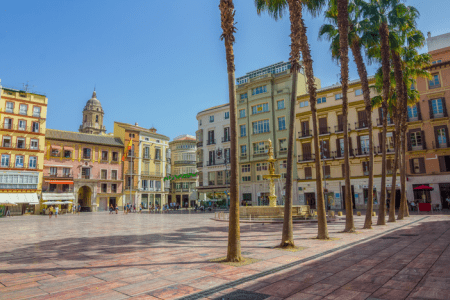
Plaza de la Constitución
Since before Christianity, Plaza de la Constitución had been the heart of the city's historical quarter and since the 15th century to the present day, it has been the city's public and political space, par excellence. In fact, it could be said that all the city's important political events of modern, contemporary Spain have taken place in this open space.
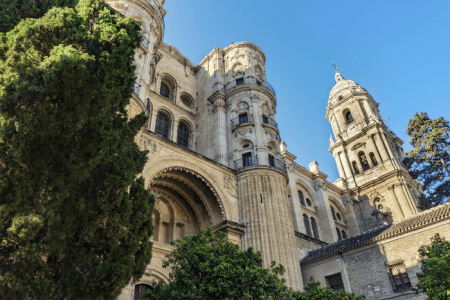
Catedral de la Encarnación
Its full name is Nuestra Señora de la Encarnación (Our Lady of Incarnation) although in Málaga it is simply known as ``the Cathedral``. Cathedrals are important in all cities, but here in Málaga it is even more important than usual. It is not only a religious building but a landmark, a national landmark, a milestone along the road and a witness to many events.
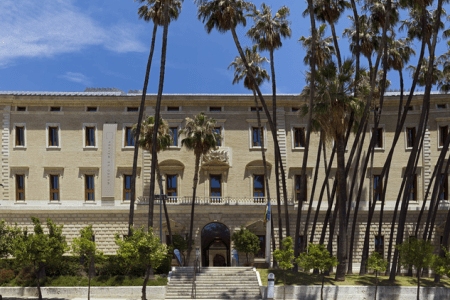
Málaga's Museum
Málaga's Museum holds the collections of two of the most distinguished institutions of Málaga, the Museum of Fine Arts and the Provincial Archaeology Museum which hold more than 15,000 references of archaeology and a paintings collection of more that 2,000 pieces from the XIX and XX centuries. It is the 5th biggest museum of Spain and the largest of Andalucia.

La Alcazaba
This fortress palace La Alcazaba is one of the city's historical monuments and is much visited because of its history and beauty. The building dates from the Muslim period and is located at the foot of the Gibralfaro hill, crowned by the Arab defence works to which the Alcazaba is connected by a walled passage known as the Coracha.
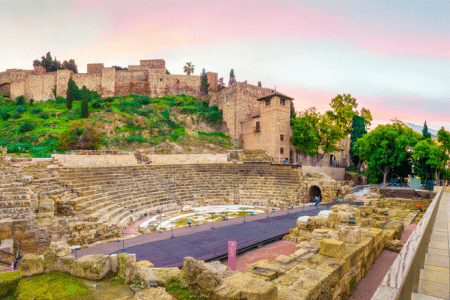
Teatro Romano
Málaga's Roman Theatre is one of the remaining symbols of Roman Hispania in the city. In addition to the theatre itself, it has a modern interpretation centre where new technologies present the life and customs of the time. The Theatre has also been returned to its original use and different types of shows take place inside.

Museo Casa Natal
The building where Pablo Picasso was born in 1881 and lived until 1884 houses works and personal belongings of the artist and his family. A specialized library and an on-going program of temporary exhibitions and cultural activities complement the offer of Picasso's Birthplace Museum.

Santiago Church
Established in 1490, this is Málaga's oldest church. Built on the site of a former mosque, only the central entrance in the Mudéjar style remains of the original façade. The square tower in the same style was conceived as a separate minaret and was attached to the church in the 16th century. From Calle Granada, a beautiful Almohad sebka cloth can be seen in one of its sections.
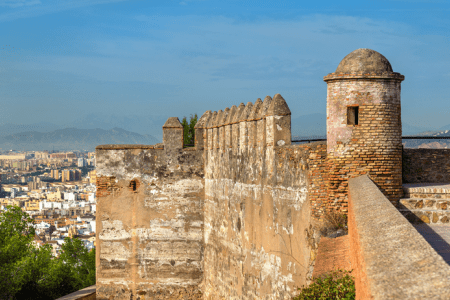
Castillo de Gibralfaro
This Castle, built in the XIV Century to house troops and protect the Alcazaba, is today one of the most visited monuments in Málaga. From its walls, visitors get spectacular views of the city and you can visit the Interpretation Centre to discover the site's history. Although it was used by the Phoenicians and Romans, in 1340 the Nasrid King Yusuf I made the place into a fortress.
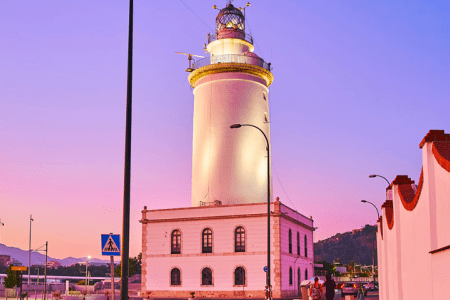
La Farola
Symbol par excellence of the city of Málaga, La Farola is a recurring element in Málaga's iconography. Much loved by the city's inhabitants, they started building it in the 19th century and it was finished in 1816, in the time of Ferdinand VII (1784 – 1833). From the Lighthouse you can enjoy spectacular views of the Port of Málaga and of the city itself.